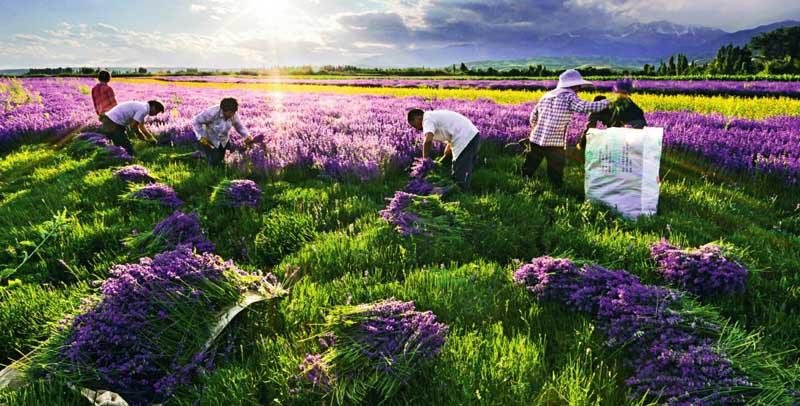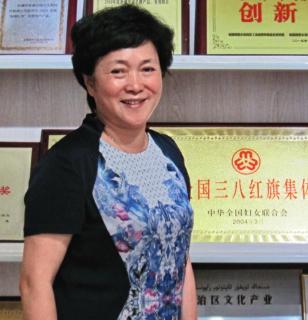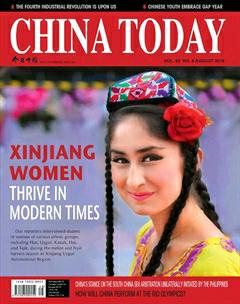Dynamic Lavender Entrepreneuse
By staff reporter JIAO FENG
THE Ili River Valley of Xinjiang Uygur Autonomous Region has become Chinas largest lavender planting base since the 1960s, when the plant was first introduced there. Its output ranks a global second, outstripping that of Hokkaido in Japan. Related lavender products are also a competitive specialty industry in Ili Kazak Autonomous Prefecture.
One local company specializing in lavender production and processing took only nine years to expand from a small workshop into a large modern enterprise. Its operations include lavender plantation and product research and development, production and sales, cultural creativity, and sightseeing tours. “In this market-oriented era of excess production capacity, entrepreneurial innovation is our eternal theme,”founder and president of the Ili Perilla Beauty Biotechnology Co., Ltd., Ms. Yang Jianxin said.
Damp Squibs
The companys industry park was approved as a national AAA scenic spot in November 2015. The screen at its entrance bears the worlds largest mural, of a single lavender plant swaying in the breeze. In high summer, it is the gate- way to a purple sea of flowers wafting an intoxicating fragrance. “Every transition is painful and riddled with pitfalls, not at all like the ‘amazing transformation people imagine,” said Yang, whose short trendy hairstyle befits her role as dynamic entrepreneuse.
Yang originally worked in a stateowned tannery in Ili. It was there that she gained experience in management, supply, and marketing. In 2000, when the country implemented state-owned enterprise reform, many poorly managed companies went bankrupt, and laid-off workers had to find their own ways of scratching a living. Yangs factory was one such casualty. After being laid off and receiving RMB 27,000 in compensation, Yang decided to start a business with her former colleagues.
During the ensuing four years, she opened several stores selling goods ranging from fur coats to steamed bread, none of which thrived. Poised with the necessary capital and labor force, the right product remained elusive.
Then, in August 2004, Yang heard through the grapevine that Ili had been earmarked as a lavender planting base. After carrying out market research, she was inspired by the immense development potential of this industry, for which the Ili River Valley possessed ideal development conditions. But starting a new business with a product that neither Yang nor her fellows knew anything about was a daunting prospect. After deep consideration, however, she decided to take the plunge into the lavender industry.
Relying on her business administration and marketing experience, Yang completed the initial transition stage and made a long-term plan. After two years of research, she incorporated the current company into a science and technology enterprise engaged in lavender resource development and utilization.
Depend on Technology
As the boss, Yang initially had only two employees, and an office of less than 100 square meters. The three of them manually carried out all the necessary procedures, from fulfilling formalities to purchasing raw materials to packing and labeling. Thanks to the high standard of raw materials and stringent quality control, Yangs products gradually gained a good reputation. Over the year that followed, even though the companys production scale was still small, it formed a niche in Ilis lavender market.
But the questions of how to be more competitive by producing distinctive goods remained. Yang was all too aware that scientific and technological innovation is the core of corporate development.
In 2009, the company cooperated with China Agricultural University(CAU) in carrying out research and applications of lavender supercritical carbon dioxide fluid extraction, technical studies on spice efficient utilization, and quality control.
Yang discovered that local spice enterprises extracted essential oils through water distillation, a method that results in poor product quality, wastes resources, and fails to exploit the full value of lavender. The new technique jointly developed with CAU is the worlds most advanced extraction method, and was first applied in China.
In 2010, the company joined hands with Xinjiang Technical Institute of Physics and Chemistry under Chinese Academy of Sciences. This collaboration achieved the proprietary technology marketization of supercritical carbon dioxide extraction, and also launched the related product production line.
The transformation of proprietary technology and strengthening of professional equipment and personnel resulted in a constantly improved quality. It also expanded the range to include more than 150 essential oil and skin care products. Yangs enterprise thus became the sole one of its kind qualified to manufacture these items.
More than 100 are on display in the company exhibition hall, where customers can also obtain information relative to their specific requirements. Essential massage cream is the latest product to hit the market.
Innovation
In 2014, Yangs company invested RMB 100 million in building a creative industry park that covers 25 mu of land, with a floor space of 13,000 square meters. It is an industrial chain operation encompassing base construction, production, research and development, marketing, and cultural tourism. Having progressed from workshop processing to Xinjiangs largest standard Good Manufacturing Practice production department, the company is a proud exemplar of the prototype modern corporate image. Yang has been selected for the National High-level Special Personnel Support Program, and received the Science and Technology Progress Award from the government of Ili Kazak Autonomous Prefecture.
At present, the company has two lavender deep processing and aromatic plants research centers, and owns 32 national patents. It has never ceased technological development and updating, and remains committed to developing high-tech products, according to Yang.
“We have established Xinjiangs first lavender entrepreneurial center, specializing in lavender resource development and featuring agriculture, supported by biotech product research, cultural creativity innovation programs, as well as Internet marketing,” Yang said.
In recent years, she has learned from other advanced enterprises how to accelerate enterprise transformation and optimize enterprise structure. After six months of practice, employee motivation has been greatly enhanced, and efficiency doubled.
As regards future development, Yang does not want her products to rely overly on the tourist market. She would rather they become daily-use items in innumerable homes. “I believe the lavender industry will endure to become a highlight of Ili known throughout the world,” Yang said.

